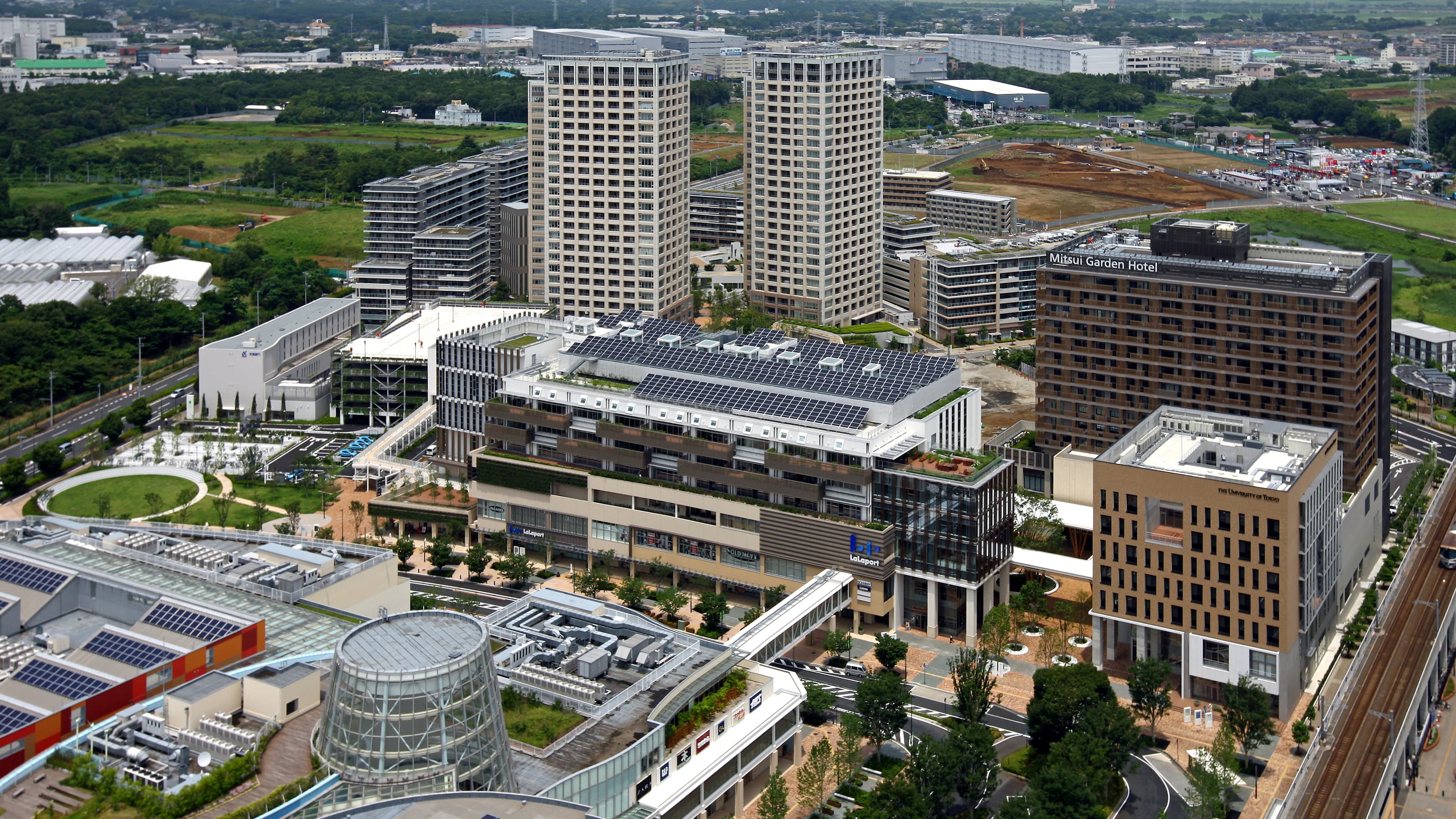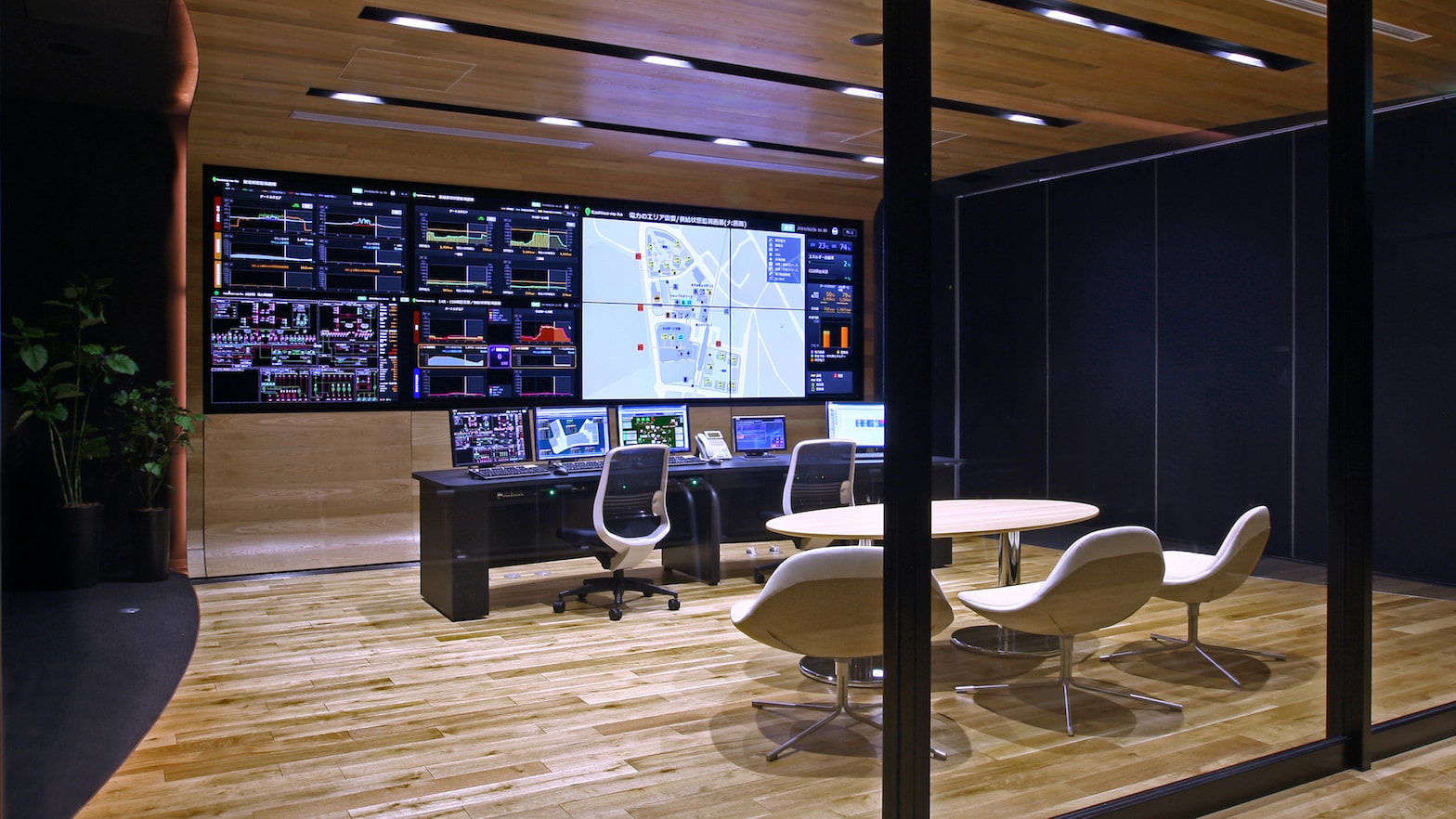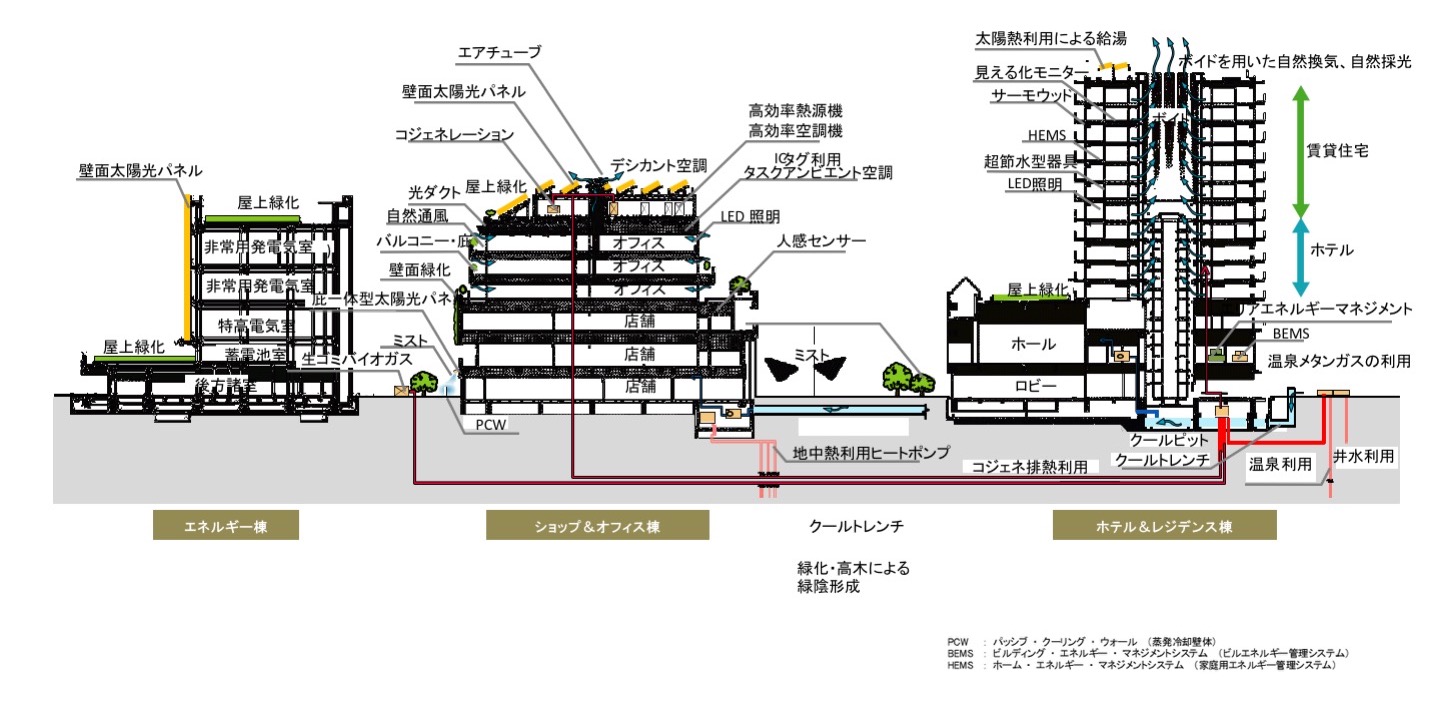Kashiwa-no-ha Smart City: Business Continuity Planning and Life Continuity Planning Done by Block
Scroll Down
The planning of disaster-resistant cities is indispensable to Japan, which is subject to many natural disasters. In recent years, business continuity planning (BCP) and life continuity planning (LCP) are being done to secure facility functions in disasters for buildings with important functions and to enable business to continue.
At Kashiwa-no-ha Smart City, for which Nikken Sekkei served as a consultant, BCP and LCP were done not only by building but also by city block. The greatest feature of this method is that it provides safety and security for the entire city by using the technologies and systems usually implemented for low carbon or energy savings to support BCP and LCP, by city block, during disasters. The cutting-edge attempts and specific technologies used for Kashiwa-no-ha Smart City are presented herein.
BCP and LCP
Kashiwa-no-ha Smart City: Recognized by MIPIM, an International Property Event

Energy Management Achieved with Kashiwa-no-ha Smart City


Applying the Regular Energy Management System to BCP and LCP for Disasters
